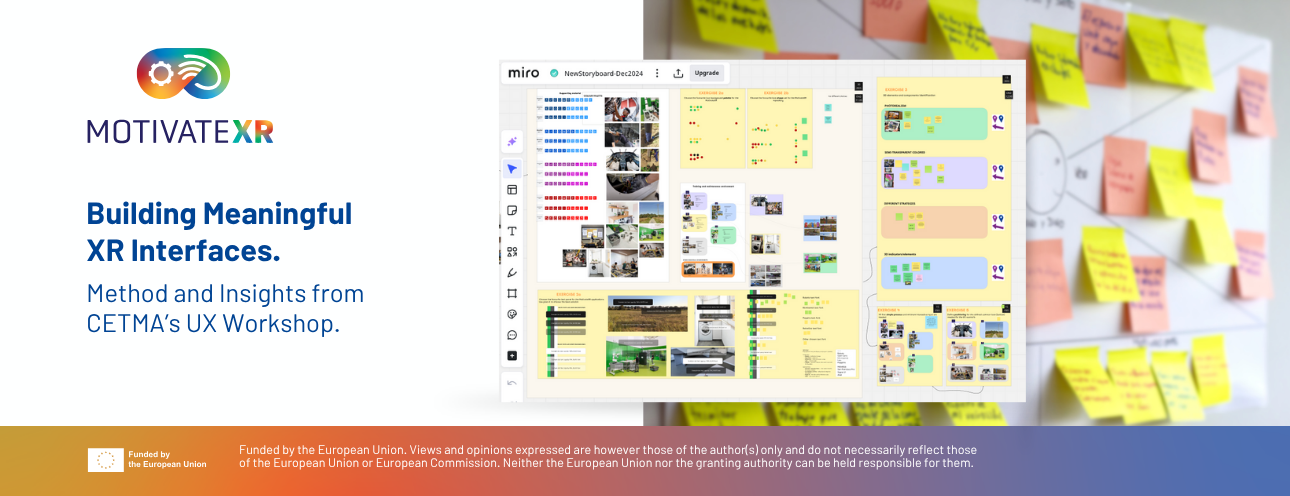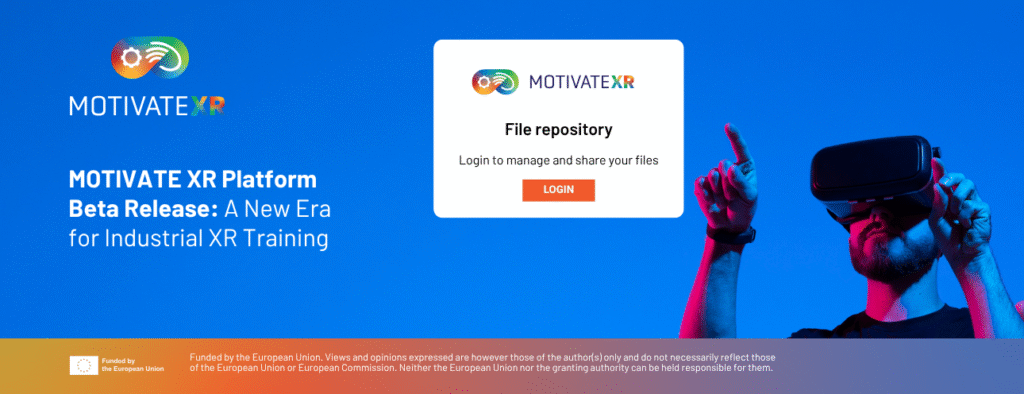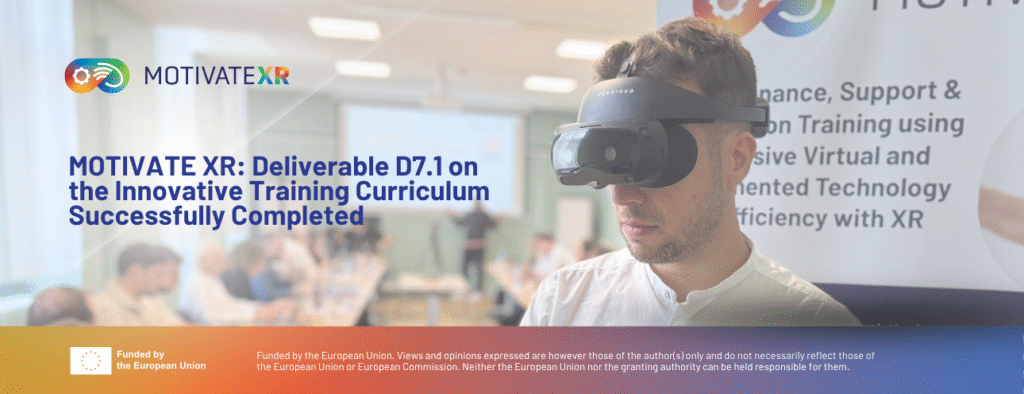Extended Reality (XR) interfaces are only as effective as they are usable—and usability doesn’t happen by chance. It must be designed, tested, and refined with users, not just for them. That’s the spirit driving CETMA’s approach to UX design within the MOTIVATE XR project.
Over the past months, CETMA has been leading a structured co-design process aimed at building a unified, accessible, and technically coherent User Experience across the project’s diverse set of XR tools. The results are now taking shape through a dedicated methodology described in Deliverable D3.7 – UX Co-Design Report and validated in the first round of collaborative workshops with project partners.
A Methodology Tailored for XR
The core of the CETMA-led strategy is a participatory UX design methodology developed specifically for immersive applications. Drawing from both User-Centered Design (UCD) and Participatory Design (PD), the methodology combines low- and high-fidelity prototyping, user journey mapping, and iterative feedback loops.
As detailed in the D3.7 deliverable, the approach starts with the identification of User Personas—based on the industrial contexts of the pilots—and continues with the definition of detailed Storyboards and functional mockups. Tools like Miro, PowerPoint, Gravity Sketch, and ShapeXR are used to support both traditional 2D design and immersive scenario testing.
This hybrid setup ensures that visual ergonomics, task flow, and interface logic are developed in direct response to real-world needs, such as wearing gloves, working outdoors, or performing safety-critical maintenance.
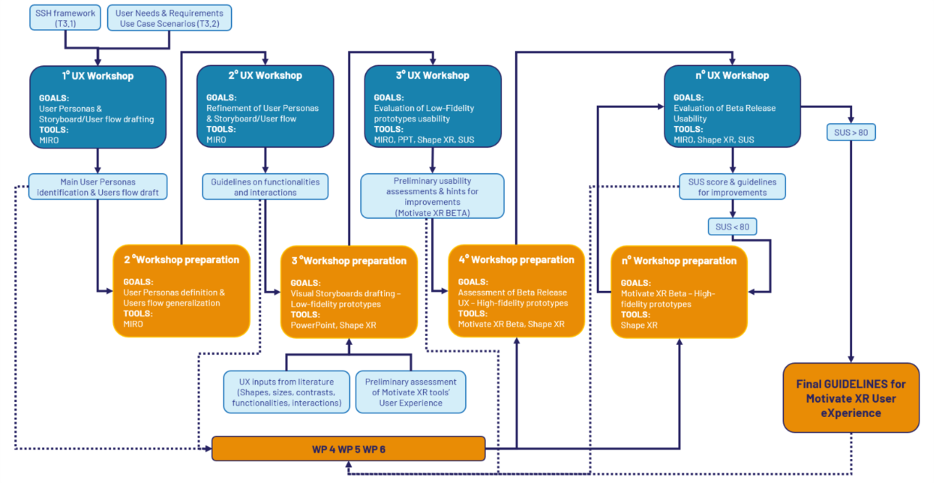
From Methodology to Practice – Highlights from the Co-Design Workshop
The first full workshop held by CETMA brought together tool developers and pilot leaders to shape two key layers of the MOTIVATE XR experience: the Authoring Tool and the Experiencing Tool.
In the Authoring session, participants explored how interface components—such as colour schemes, font hierarchies, tab menus, and control buttons—could be made configurable or standardised. Through exercises on Miro, teams defined:
- the flexibility of current tools in customising UI,
- the feasibility of shared asset libraries (e.g., icon sets, templates, 3D markers),
- and the potential for common folder structures and layout patterns across platforms.
They also reflected on interface anchoring strategies (e.g., fixed in space, marker-attached, or FOV-relative) and the design of a universal control panel framework that could operate consistently across all authoring tools.
In parallel, the Experiencing session addressed runtime challenges: visibility under variable lighting, fatigue from UI clutter, responsiveness of animated elements, and interface persistence. Participants tested colour palettes, icon contrasts, and layout positions directly within contextual pilot scenarios. One particularly relevant output was the draft of a Minimal Viable Interface for AR field usage, including core buttons like BACK, PLAY, HELP and toggles for document viewers or remote support.
AUTHORING WORKSHOP SUMMARY
The Authoring Workshop focused on aligning interface customisation capabilities and UI logic across the different authoring tools developed or integrated within the MOTIVATE XR platform. The session targeted tool owners and developers as primary participants, with the objective of verifying which aspects of the graphical user interface can be standardised, adapted or extended to support a coherent visual identity and authoring workflow.
The first exercise concentrated on the level of flexibility allowed by each tool’s user interface in terms of layout, colours, fonts, button states, and tab organisation. Participants were invited to assess their tools’ capacity to support these modifications and to provide examples or limitations where relevant.
The second exercise explored how assets are structured within each authoring environment. Participants reconstructed their default project folder hierarchies and commented on whether alignment would be technically feasible across tools. Special attention was given to naming conventions and the possibility of introducing a shared structure for the MOTIVATE XR environment.
The third exercise investigated the possibility of preloading reusable UI components. These included 2D icons, 3D visual aids, predefined annotations or interactive elements. Each tool was evaluated on its ability to support shared asset templates and to manage them across multiple projects.
The fourth exercise shifted attention to how the interface is anchored or positioned in space. Various spatial configurations were considered, such as static placement within the environment, dynamic positioning relative to the user’s field of view, anchoring to a marker, or body-relative interfaces. Participants marked which modes were already implemented or could be integrated.
The fifth exercise aimed to define a core set of control panel functionalities that could be made consistent across tools. These included basic navigation commands (e.g. PLAY, BACK, HELP), optional inputs, and interaction feedback mechanisms. The result was a preliminary matrix of standard functions, differentiating mandatory from optional elements and noting the degree of customisation available per tool.
Finally, a sixth exercise focused on the main platform and specifically to the definition of four main phases of the use of the beta release of the platform, where login functionality, access and upload of data will be guaranteed and where will be possible to test most of the tool implemented into the MOTIVATE XR project.
EXPERIENCING WORKSHOP SUMMARY
The Experiencing Workshop addressed interface logic from the end-user’s perspective, focusing on real-time interaction with XR content during training, operational or educational scenarios. Pilot owners, UX designers, and representatives from tool development teams participated to contribute both technical and contextual perspectives.
The first exercise opened with a reflection on usability risks and ergonomic challenges. Participants highlighted constraints such as visual overload, occlusion in AR, hand-eye coordination issues and limited interaction bandwidth. These considerations helped define the functional perimeter for subsequent design proposals.
In the second exercise, teams worked on co-defining a core visual language composed of accessible colors, scalable iconography, and context-sensitive text panels. Real-world pilot imagery and AR mockups were used to validate visual contrast, with accessibility criteria (e.g., WCAG compliance) considered throughout.
The third exercise explored the role and behaviour of 3D elements within the experience. The group compared static vs. animated 3D assets, opaque vs. semi-transparent rendering, and how spatial alignment could be preserved across user movements. This contributed to defining visual constraints for effective AR feedback components.
The fourth exercise invited pilot owners to select the first scenario they need to implement within the MOTIVATE XR project and planned for their training or maintenance process. In parallel, they could anticipate the preliminary set of interactive elements to be integrated into the XR pathway
The final exercise invited participants to rapidly define a minimal viable XR experience, combining selected controls, content types and display logic. This served both as a synthesis of previous exercises and as an initial benchmark for pilot implementations.
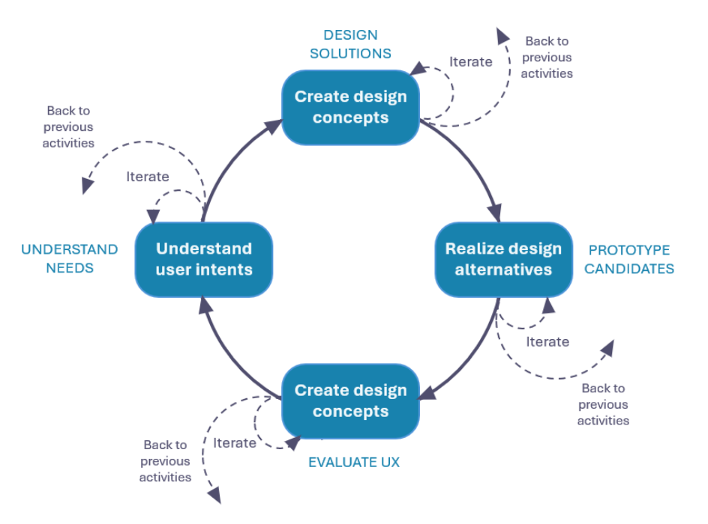
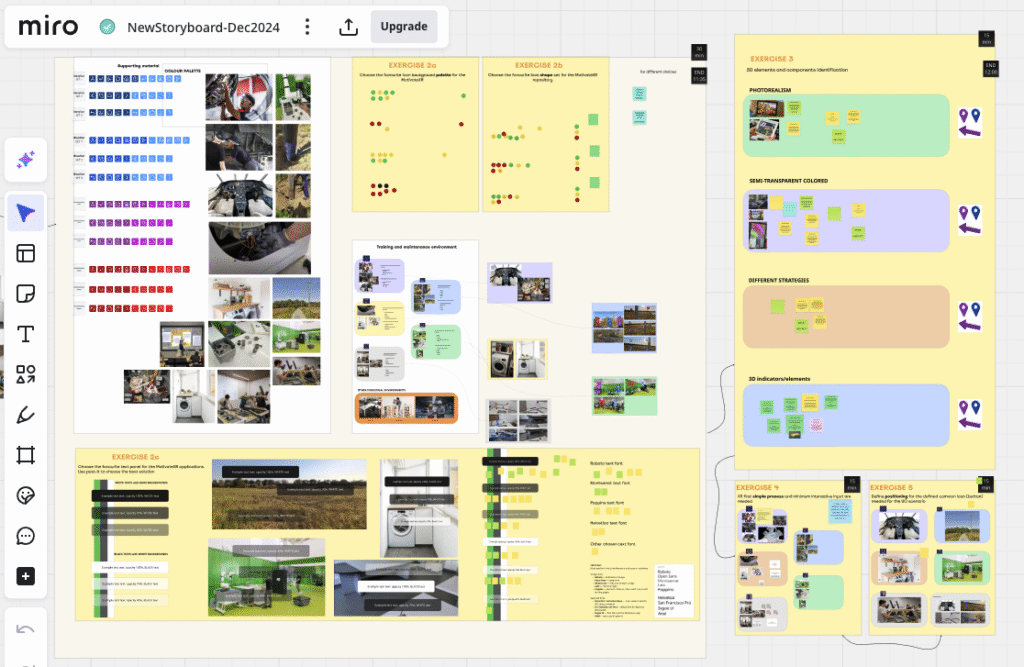
Why It Matters – From Strategy to Integration
These activities are not abstract. They directly impact how XR tools will be integrated, experienced, and maintained by users in industrial, educational, and field settings.
The outputs of the UX co-design process:
- inform the beta release of the MOTIVATE XR platform,
- feed directly into WP4, WP5 and WP6 implementation paths,
- and guide the development of a shared design system—a “MOTIVATE XR UI kit”—to be reused across the suite.
Moreover, CETMA’s work ensures that accessibility, recognisability and cognitive simplicity remain at the forefront of design decisions. This is particularly important given the diversity of XR hardware and the variability of user skill levels across pilots.
What Comes Next
With the foundation laid by D3.7 and the first workshops, the next phases will focus on:
- refining and validating high-fidelity prototypes using immersive tools;
- running usability tests and heuristic evaluations;
- and finalising the Motivate XR UX Guidelines for cross-platform adoption.
CETMA’s approach is not only technical—it’s also collaborative and inclusive. By combining research-driven design with iterative stakeholder engagement, the team aims to deliver an XR suite that feels natural, functional, and empowering to all users.
Stay tuned as we transform insights into experiences—and workshops into working solutions.
References
For those interested in deepening the UX design principles applied in the MOTIVATE XR co-design process, we suggest the following two key resources:
- Microsoft Mixed Reality Design Guidelines
A practical and well-maintained resource focused on spatial interaction models, interface positioning, and usability patterns in AR/MR environments. - ISO 9241-210:2019 – Human-centred design for interactive systems
The international reference standard that defines the principles and activities of user-centred design. It provides a solid methodological basis for co-design processes applied in immersive and cross-platform systems.
Author

CETMA
Antonio Zingarofalo is an Engineer specialising in Industrial, Electronic Systems, and Mechanical Engineering (Smart Factory) from the Polytechnic University of Bari. During his studies, he contributed to robotics and assembly system component design for Apulian companies. Currently, he is a researcher in New Product Development at CETMA, where he supports SMEs in the design and development of new industrial products, particularly those integrating IoT technologies. His core responsibilities include innovative product concept creation, engineering, UX, and risk analysis.
